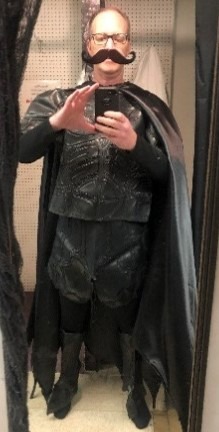A few months ago, I wrote an article called Finding balance. It contained a topic called the Iron Triangle or the Triple Constraint. Some have asked for more clarity on the topic.
The Iron Triangle is a simple tool that helps you define your priorities for a project, and it helps you set realistic expectations for yourself and for your team both internal and external.
The qualities the Triangle addresses are, in any order: Quality (Good), Speed (Fast) and Cost (Cheap). (Figure 1)

To use it, you only need to pick your most important constraint: Quality, Speed or Cost-effective. Once you choose your primary constraint, you can pick one more. However, here is the kicker: you cannot have the third.
The interplay among the three shows why it’s complicated, and why it’s useful. (Figure 2)

So, you can get good and fast, but it will cost you. You can get fast and cheap, but it won’t be great. You can get good and cheap, but you are going to have to wait.
The general idea is to define “What is most important?”
… to this client
… for this project
… at this time.
I make this distinction, because “What is most important?” can change based on the client, the project, and the timing.
… to This Client
The Client is anyone for whom you are doing a project. It might be a paying customer, a co-worker, another department, or your boss. The Client is the one who commissions the work. It is very important to find out as close to the start of a project what is most important to the person who is responsible for getting the job done. For me, this decision sets the overall constraint (some use the term “guardrail”) for my approach to this project. There are six possible configurations of the three attributes. Different clients will have different priorities or general tendencies. It is likely a good idea for you to identify AND communicate your general tendencies to your co-workers, and certainly to your subordinates and to outside contractors. It can help them make better decisions when you aren’t there to decide (that is, decisions “more to YOUR liking”). It will also help them filter and present better options to you.
| Priority 1 | Priority 2 | Priority 3 (Sacrificing) | So, don’t be surprised if the project is: |
| Quality | Speed | Cost | Pricy (costs more) |
| Quality | Cost | Speed | Tardy (takes longer) |
| Speed | Quality | Cost | Pricy (costs more) |
| Speed | Cost | Quality | Ugly (isn’t exactly what you had in mind) |
| Cost | Quality | Speed | Tardy (takes longer) |
| Cost | Speed | Quality | Ugly (isn’t exactly what you had in mind) |
Surround yourself with people you trust who think differently than you!
My father, for instance, will take Quality over Speed over Cost as priorities 4 out of 5 times. I know this from almost 50 years of trial and error (mostly error, ha!). I usually choose Speed over Quality over Cost. To further complicate things in our family business, my brother and boss, most often opts for Cost over Quality over Speed. You can imagine the communication challenge this caused when we brought in an outside contractor (a design/branding agency) who had to deal with each of us together and individually.
I used to wonder how we came about our orientations. Upon reflection, I believe it was in response to each other. Our different orientations enable us to find the best solution to the problems at hand. My father is usually the champion of Quality, I the advocate of Speed, my brother the voice of Reasonable Costs. I believe this happened because I know that my dad is going to bring the quality orientation to the discussion and my brother the cost perspective. It is relevant, I think, that Quality is either #1 or #2 for all of us.
… for This Project
Not all projects are going to have the same priorities. I am not going to choose Quality as the chief priority if I have zero budget and no time. Priorities can change given a particular project. It is important to be realistic and practical when deciding AND communicating to others what your main constraint is. For instance, if my father, brother and I are in a sinking lifeboat with a hole in it, I am not going to hire a carpenter and wait for the materials to arrive. Even though it’s cold, I am going to use my brother’s shirt to plug the hole right now. Often, “It’s not pretty, but it got the job done” is perfectly fine.
We were at a tradeshow recently and the sign on the top of our booth had gash on it from a mishap during the booth assembly. The gash ran right through our logo. I left the booth to take up the issue with the assembly workers who had put our booth together. I returned about 20 minutes later and was amazed to find the sign fixed. One of my co-workers “fixed” it with a black chisel marker and a white paint pen. She employed what she called the “10 and 10 Rule.” When I asked her what that was, she explained, “I ask someone to find my correction from 10 feet away in 10 seconds. If they can’t, it’s going to be fine for the show.” When the three other members of our crew showed up the next day, no one even noticed. For pennies (cost) and in minutes (time), she had a solution that worked. We got a new “quality” sign three shows later (don’t tell my father) for $750.
… at This Time
Priorities for a specific project can change over its lifetime. In the beginning, with deadlines far off on the horizon, speed might not be the highest priority. I recently had the opportunity where this played out in my life in an unexpected fashion.
I was asked to give a speech — on Halloween. I thought it would be funny and memorable to dress in a high-end Batman cosplay costume. I could pretend that I asked about the dress code. When I was told, “you are going to need a suit” I would reply, “I’ve got just the thing.” Some in the audience would laugh, and the situation would lend itself to talking about relevant topics: Dealing with adversity, the importance of communication, identity, brand, origin stories, defining and redefining who you are, not taking yourself too seriously, etc.
So, I went to the premier costume shop in Chicago. Nothing they had met my first constraint: Quality. It turns out, cheap and fast are plentiful in the costume world. High-quality was more difficult to find. I was looking for the unicorn: GREAT FAST CHEAP, and it was costing me time, and some sleep. I was anxious and frustrated.
If I wanted to go forward, I had to choose to sacrifice Quality (to get SOMETHING quick) OR Cost (to get THE THING EXACTLY AS I WANT IT). I made a different choice: I abandoned the costume altogether. I choose to let go entirely and to focus on the speech.

In Conclusion
For yourself, it might be useful to let others know your tendencies in relation to the Three Constraints.
For a project, it is important to have a clearly defined overall goals for the project, and which is the Primary Constraint. This will help with making decisions about how to accomplish the project from the beginning and along its course.
It is a good idea to check in, asking specifically about the three constraints often and communicate if things change. If costs go up; if deadlines change; if quality is unavailable; etc.
Priorities shift. This is not necessarily good or bad. Be flexible and be willing to shift with them. Otherwise, you might end up looking the fool.
